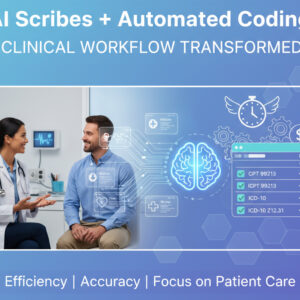Starting your recovery journey is a big and brave step. Whether you’re seeking help for addiction, mental health struggles, or emotional healing, choosing to reach out shows strength and hope. But if your first session will happen online, you might be wondering what it will be like. Will it feel comfortable? Will it really help? These questions are completely normal.
Online recovery sessions, also known as virtual therapy or telehealth recovery, have become very popular because they’re convenient and private. You can speak to a professional from the comfort of your own home, without worrying about travel or waiting rooms. For many people, this makes it easier to get help regularly. Understanding what happens during your first virtual session can ease your nerves and help you feel more prepared.
Understanding the Rise of Online Recovery
The shift to online recovery has made it easier for people everywhere to access care. Many individuals live in areas without nearby clinics, or they might have work or family schedules that make in-person visits difficult. With virtual care, help is just a video call away. You can talk to doctors, therapists, and counselors safely and privately from any location.
This approach isn’t just about convenience—it’s also about comfort and accessibility. People who once felt nervous walking into a clinic now find it easier to open up online. Virtual recovery has become a reliable, secure, and compassionate way to begin healing.
Getting Ready for Your First Online Session
Your first step happens before the call even begins. You’ll likely receive some forms to fill out, including details about your health, medication, and personal history. These forms help your therapist or doctor understand your situation before meeting you. Completing them carefully saves time during your session and ensures your provider has all the information they need.
Next, prepare your space. Choose a quiet and private area where you feel relaxed and free to talk. Make sure your internet connection, camera, and microphone are working properly. Try to log in a few minutes early to avoid feeling rushed. Have a notebook or tissue box nearby—sometimes emotions surface when you least expect them.
Finally, take a few moments to think about what you want from recovery. What made you seek help now? What changes are you hoping to see? You don’t need all the answers, but reflecting ahead of time can make your session more meaningful.
What Happens During the First Virtual Session
When your session begins, your therapist or medical provider will introduce themselves and explain how the process works. They’ll go over privacy policies, treatment options, and what you can expect in future sessions. This is your time to ask questions and get comfortable. Remember, the first meeting is as much about getting to know each other as it is about starting treatment.
You’ll then have a chance to share your story. You might talk about your health, habits, or challenges. If it’s an addiction recovery session, your provider might ask about your substance use, past treatments, and daily routine. Everything you share helps them understand your needs and build a plan that fits your situation.
Depending on the program, your provider may also assess your mental and physical health, and possibly discuss treatment options such as therapy methods, medication, or lifestyle support. Some sessions include setting small goals, like tracking your thoughts, reducing cravings, or planning coping strategies for the week ahead.
How You Might Feel After the Session
It’s completely normal to feel a mix of emotions after your first online recovery session. You might feel relief after opening up, or a little drained from sharing personal details. Some people even feel unsure if the session helped—but that’s okay. Recovery is a process, and every step counts.
After the session, give yourself some time to rest or reflect. You can write down how you felt, what you learned, and what you want to talk about next time. These small reflections help you stay connected to your progress and make the next session even more effective.
Overcoming Common Online Challenges
Online recovery is convenient, but it can come with small challenges. Sometimes internet issues interrupt the session, or you might worry about privacy if others are nearby. The key is to prepare in advance—test your technology, find a quiet space, and let your provider know if you experience any issues. They understand and will work with you to find solutions.
If you ever feel that your provider’s style doesn’t fit your comfort level, that’s okay too. Recovery is personal, and it’s important to feel safe and supported. You can always share your preferences or request adjustments to make your sessions more comfortable.
Making the Most of Your Online Recovery
Virtual recovery works best when you stay consistent and engaged. Try to attend every session, even on days you feel less motivated. Healing takes time, and showing up regularly helps build momentum. Be open with your provider about how you’re feeling, what’s working, and what isn’t.
Between sessions, practice any strategies your therapist recommends—such as journaling, relaxation techniques, or mindfulness. Recovery doesn’t just happen during the hour you spend online; it’s something you build each day through small steps.
Also, remember to be kind to yourself. It’s natural to have good days and hard days. What matters most is that you keep moving forward, one session at a time.
How Online Care Builds Connection and Comfort
Some people worry that online therapy might feel distant or less personal. But many find the opposite—it can actually feel easier to open up in a familiar environment. Talking from your home, surrounded by comfort, helps reduce stress and allows deeper honesty.
Therapists and recovery doctors trained in telehealth also know how to create warmth and trust through a screen. They use active listening, empathy, and clear communication to ensure you feel heard and supported. Over time, this connection becomes a powerful part of your healing journey.
The Role of Virtual Recovery Services
Online recovery platforms are designed to make professional help easy to access. They combine counseling, medication-assisted treatment, and follow-up care under one system. This approach removes many of the barriers that once made recovery difficult, such as travel costs, scheduling issues, or limited clinic availability.
Many people find comfort knowing they can reach their doctor or counselor quickly through secure video calls. It’s a system built for flexibility—meeting people where they are, both physically and emotionally.
Conclusion
Starting your recovery online might feel uncertain at first, but it’s one of the most empowering choices you can make. Your first virtual session is an opportunity to connect with someone who truly listens and understands. You’ll discuss your history, explore your goals, and begin creating a personalized plan to move forward. Remember that progress takes time, and every session is a step closer to stability and healing.
If you’re looking for a supportive and professional online recovery service, An Insured Recovery is an excellent option. They offer a convenient and compassionate virtual Suboxone clinic where licensed medical professionals provide personalized care right from your home. Their focus on accessibility, patient comfort, and continued support makes recovery simpler and more achievable for anyone ready to begin.
https://repurtech.com/



